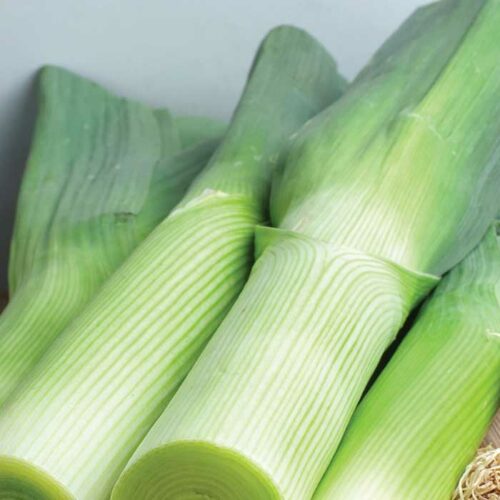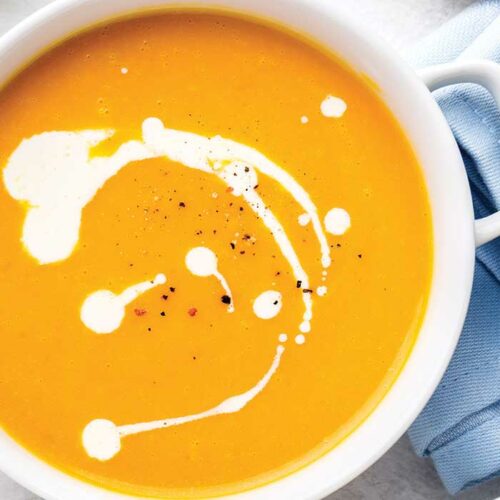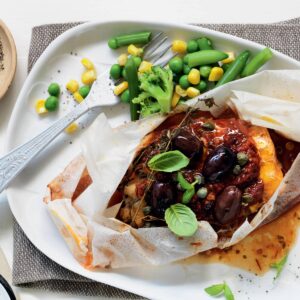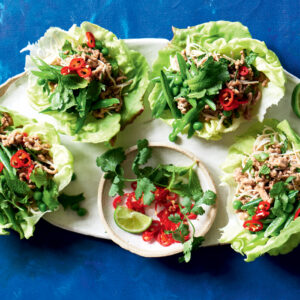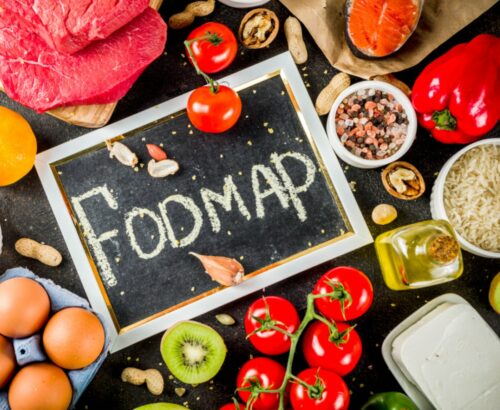
Scientific studies have shown that a low-FODMAP diet can significantly relieve irritable bowel syndrome (IBS) symptoms for many sufferers. This complete guide to the low-FODMAP diet is intended as a resource only. A low-FODMAP diet is used to help symptoms of certain gastrointestinal conditions and should only ever be undertaken with the supervision of your doctor or relevantly-qualified dietitian. The strict elimination phase of the diet is intended to be followed for two to six weeks only, followed by long-term transition onto a modified diet that lets you return to enjoying high-FODMAP foods you can tolerate. If you prefer having this complete guide in a print booklet form you can purchase it, details here. Very handy if you want to refer to it often.
What is IBS?
Irritable bowel syndrome is a ‘functional gastrointestinal disorder’. This means it causes changes in the function of the gut but doesn’t have any features such as ulcers, inflammation, thickening of digestive tissues, lumps and bumps or abnormal blood tests – all of which would indicate a different condition. Read more
Food triggers for IBS
People with IBS often know that certain foods will trigger their symptoms. It has been shown that dietary change is the major way in which people with IBS attempt to help themselves. Read more
What are FODMAPs?
FODMAPs are part of the food group, carbohydrates (starchy food). They’re the favourite food for bacteria that live naturally in the digestive system. Read more
Is a low-FODMAP diet suitable for you?
You might benefit from a low-FODMAP diet if:
• You’ve been diagnosed with IBS by your doctor
• You have symptoms of IBS and no other medical cause has been found
• You’ve been diagnosed with bacterial overgrowth (SIBO). Read more
What can I expect from a low-FODMAP diet?
There are three stages to the low-FODMAP diet: elimination, food challenges and food reintroduction. Read more
Your 12-week low-FODMAP plan for IBS
Before you get started on this diet, it’s crucial to speak with your doctor. There are many conditions that have similar symptoms to IBS. There may be other reasons, including medication interactions, that mean changing your diet may be best supervised by a specialist dietitian or doctor. Again, this information is produced for education only and is not intended as medical advice or diagnosis.
Weeks 1-4: Elimination
The aim of the elimination stage of the diet is to reduce the total number of all FODMAPs in the diet and give your digestive system some rest. Read more
For ideas for a low-FODMAP menu plan see below.
Download FODMAP food elimination guide
Weeks 5-12: Food challenges
So far, you’ve been avoiding all FODMAP food groups. Now it’s time to test the individual FODMAP groups. There might be some you’re not having a reaction to. Read more
Download your stage 2 challenges here
Weeks 13 onwards: Food reintroduction
Now you’ve completed the food challenges you should have a list of which FODMAP groups you reacted to and you’re ready to start reintroducing those. Read more
Download a food and symptom diary
Stage 1: Elimination low-FODMAP menu plan
• Try porridge oats made with water and lactose-free milk or milk substitute. Top with cinnamon and brown sugar, banana or blue berries
• Make your own muesli with oats, seeds, nuts and gluten-free grains. Serve with lactose-free yoghurt or milk, blueberries and kiwifruit
• Gluten/wheat-free bread, toasted, with margarine and marmalade
• Omelette or eggs and gluten/wheat-free toast or bread.
Lunch
• Sandwich made with gluten/wheat-free bread. Try fillings such as ham, lettuce, tomato, tuna mayonnaise, hard cheese, small amount of avocado and smoked chicken.
• Homemade low-FODMAP carrot, buttercup pumpkin or other soup with gluten/wheat-free bread.
• Frittata or Spanish omelette
• Baked potato with mince, hard cheese or tuna mayonnaise
• Sushi or sushi bowls
• Leftover main meals
Dinner
• Chicken stir fry, served with rice noodles or rice
• Gluten/wheat-free pizza base with tomato, olives, cheese, chicken, sausage or ham topping or a low-FODMAP calzone
• Steak, potato and low-FODMAP vegetables
• Baked/ poached/ grilled fish with rice, potato, fries or small amount of kumara and low-FODMAP vegetables
• Low-FODMAP chicken and vege bake tray with pesto
• Gluten/wheat-free pasta or spaghetti with minced beef in a tomato sauce
Snacks
• Bliss balls – but check the ingredients and number of serves suitable first
• Fresh fruit: kiwifruit, blueberries, strawberries or banana
• Rice cakes with peanut butter or cheese and marmite
• Plain rice crackers
• Sunflower, peanut and almond mix
• Gluten/wheat free baking such as lemon and poppy seed loaf
• Carrots, cucumber (peeled) and cherry tomatoes with dip
• Hard-boiled egg
For more low-FODMAP meal ideas check our low-FODMAP recipe collection.
Related links
Do I really need to avoid onions and garlic?
Can I eat out on a low-FODMAP diet?
Do portion sizes matter on a low-FODMAP diet
How to spot FODMAPs on food labels
Tips for FODMAP shoppers
Shopping for low-FODMAP foods
Banish boring low-FODMAP meals
FODMAP content of milks
Foods to eat or avoid on a low-FODMAP diet
| Food type | Enjoy | Avoid |
|---|---|---|
| Fruit | avocado, 1/8 or less banana, fresh or dried (not too ripe) blueberries rockmelon coconut, fresh, ½ cup or less coconut, dried, ¼ cup or less cranberries, dried, 1 tablespoon or less durian fruit grapes honeydew melon kiwifruit, gold or green lemon longon, 5 or fewer lime lychee, 2 or fewer mandarin orange passionfruit pawpaw pineapple passionfruit pomegranate, ¼ cup or less of seeds or ½ small or less raspberries rhubarb rock melon star fruit strawberries tangelo | apples apricots blackberries boysenberries cherries custard apples dried fruit feijoa figs grapefruit mango nashi pear nectarines peaches pears plums persimmons prunes tamarillos watermelon |
| Veges | alfalfa bamboo shoots bean sprouts beetroot, 2 slices or less bok choy broccoli, head not stalk broccolini, stalks not head brussel sprouts, two or less butternut squash, ¼ cup or less cabbage, Savoy or green, ½ cup or less cabbage, red capsicum, any colour carrots celery, 5cm or less chives choko, less than ½ cup Chinese greens corn, ½ cob or less courgette cucumber, peeled edamame eggplant endive fennel less than ¼ cup galangal ginger green beans gumara, less than ½ cup gale leek, green leaves only lettuce, all types marrow mushroom, oyster only okra olives parsnip potatoes puha pumpkin, buttercup silverbeet spaghetti squash spinach spring onion, green part only squash swede taro less than ½ cup tomatoes turnip yams watercress | asparagus artichokes cauliflower chicory garlic leek, white part mushrooms onions, white, brown, shallots, spring onion (white part) onion and garlic salts and powders legumes, chickpeas, red kidney beans, baked beans, borlotti beans lentils peas, fresh and frozen pumpkin except buttercup snow peas sugar snap peas |
| Dairy and dairy alternatives | almond milk butter coconut milk, drinking, less than ½ cup per day coconut milk, canned, ½ cup or less coconut milk, canned for cooking coconut yoghurt ghee goats’ milk yoghurt hard or ripened cheeses, Parmesan, cheddar, Edam, Gouda, mozzarella, brie, camembert, feta lactose-free milk lactose-free yoghurt margarine oat milk, ½ cup or less rice/nut milks soy milks made from soy bean extract soy yoghurt (without added Inulin) | cows, goat and sheep milk, including A2 cow and sheep yoghurt cream, sour cream milk powder condensed, evaporated and butter milks custard ice cream coconut milk with added inulin soy milk made from whole soy bean soft cheeses that have not undergone a ripening process, Ricotta, cottage cheese, Haloumi, cream cheese |
| Carbohydrates | almond meal flour, ¼ cup or less bulghar, less than ¼ cup cooked buckwheat flour corn crackers gluten-free breakfast cereal, without fruit and apple concentrate green banana flour maize flour polenta (corn) quinoa rice noodles, crackers and cakes rice rolled oats spelt sourdough, 2 slices or less spelt, organic, sieved tapioca teff wheat and gluten-free breads – avoid soy bread wheat and gluten-free premixed flours wheat and gluten-free flours wheat and gluten-free pasta wheat and gluten-free biscuits | amaranth flour barley flour bread chickpea/gram/channa flour croissants coconut flour pita bread pizza rye flour soy flour/soy grits sour dough wheat flour wheatbran wheatgerm wheat breads wheat pasta wheat-based breakfast cereals worn cereals (unless gluten free) muesli with wheat flakes and fruit honey-coated cereals |
| Proteins | beef and lamb canned lentils chia seeds chicken chickpeas less than ¼ cup fish linseed LSA mix nuts, no more than 10 nuts of any type Quorn peanut butter pork, bacon and ham pumpkin seeds sunflower seeds seafood sesame seeds tempeh tofu | baked beans cashew nuts dried or canned beans, except lentils pistachio nuts processed or marinated meats with onion salt/ powder or garlic silken tofu TVP |
| Sweeteners and sugars | boiled sweets golden syrup, less than ½ tablespoon jam, marmalade (from allowed fruit list) sugar stevia syrup, molasses, treacle, rice, maple | agave syrup high fructose corn syrup honey isomalt (953) jam made from fruits to avoid mannitol (421) molasses sorbitol (420) xylitol (967) yeast extracts |
| Drinks | water, hot, cold, mineral, tap decaffeinated fruit, herbal, peppermint teas caffeine drinks, less than 3 cups a day decaffeinated coffee cocoa powder/drinking chocolate drink sensibly vodka, gin, whisky, small amounts of dry white wine | chicory drinks and chicory containing coffee substitutes chamomile tea coconut water fennel tea fizzy drinks fruit juices fructose containing sport drinks herbal tea oolong tea beer, wine, cider, rum |
Download a copy to print and keep
Going forward
As your digestion heals, so your tolerance of FODMAP foods should improve. It’s worth re-challenging your FODMAP triggers every 3-4 months. You may find your tolerance gradually improves over time. This Toolkit has a full print ready version available for purchase, details here.
Stress can also be a trigger for IBS. Healthy Food Guide editor, Jenny de Montalk, shares some tips for how to cope with day to day stress.
Exercise also plays a part in reducing stress.
Avoiding your individual low-FODMAP triggers while following a balanced Mediterranean-style diet will help keep you healthy. Here’s how to do it.
www.healthyfood.com





